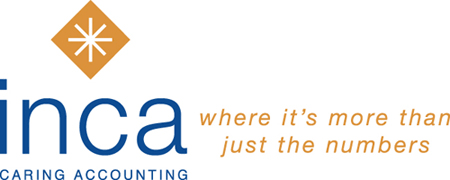This is the second blog in a series offering advice and guidance to anyone considering starting a new business. We’ll be publishing further blogs over the coming months.
One of the first things you’ll need to do when setting up your new business is decide which legal structure best suits your requirements.
Assuming you’re not setting up a charitable or not-for-profit venture, and your main objective is to make money, you have three options. You can choose to trade as a self-employed sole trader, a limited liability company or a partnership.
How you decide which structure is best for you will come down to a range of factors, including the kind of business you’re going to run and your personal circumstances.
Your key considerations will likely include ease of set-up, legal and administrative obligations, and the extent to which your personal assets will be protected if the business fails. The way you’re taxed will also be important, and while we’ll touch on this briefly here, we’ll look at tax and remuneration in more detail in a future blog.

1. Self-employed Sole Trader
As the easiest type of business to set up, this is by far the most popular option. All you need to do to be ready to start trading (aside from any equipment, materials, tools and insurance your business may call for) is to register as self-employed with HMRC and open a dedicated bank account.
In fact, a separate bank account is not a legal requirement, but we always advise having one you can use exclusively so your business and personal finances are kept apart from each other. Doing this will help make record-keeping much easier, reduce accounting fees, and, most crucially, ensure you have a near real-time overview of how your business is performing.
Because you and the business are one and the same, any funds in your business trading account are yours, which means you’re free to transfer any money from your business account into your personal account whenever you want to.
As a self-employed sole trader, you’re required by law to keep records showing business income and expenses. You’ll have to pay tax on any profit you make, and in the event that the business makes a loss, you may be able to offset it against other income earned in the current or preceding tax years.
The ability to offset losses in this way can make the self-employed sole trader option attractive if you’re coming out of high-earning employment – especially if your business involves high set-up costs and you anticipate little or no revenue in the early days.
If your turnover is below the threshold for compulsory VAT (currently £85k) and you don’t employ any staff, the only statutory obligation you’ll have – apart from anything relating specifically to the kind of business you’re running – will be to file a Self Assessment tax return by 31st January following the end of the tax year in which you set up (also the date by which you’ll need to settle any tax you owe).
On your tax return, you’ll need to state any income you receive from other sources, including other employment and property rental, together with any allowances you may be entitled to claim.
One tax-related issue that can catch out sole traders – especially those filing last-minute is the fact that if your overall liability is more than £1k, HMRC is likely to demand you make a 50% contribution to your next tax bill – as well as settling up for the period covered by the return.
The most important thing to be aware of as a sole trader is that your personal assets are not legally protected: this means that if you fail to pay debts or your business ceases to trade owing money, your creditors may have an unlimited claim on your personal assets, including your home.
If your start-up works in the construction industry, you may need to register for the Construction Industry Scheme (CIS). Because CIS registration has implications for how you will be taxed and the records you need to keep, you should take advice from your accountant if this affects you.
2. Limited Liability Company
Although limited companies are often associated with large corporations, they often consist of just one person.
You might choose to set up as a limited company rather than a self-employed sole trader because company directors are protected against liability should the business fail. Creditors can have no call on your personal assets so long as you run your limited company correctly and ensure you stay fully compliant with regulations. Protection will not apply in the event of fraud or negligence.
If you are both the owner and the director of the business, you will have two sets of responsibilities. As a director, your responsibilities will change depending on how the business is performing. Having tools in place to provide financial reporting will be critical to help you understand the position of your business and ensure you meet your statutory obligations at all times.
Because a limited company is classed as a separate legal entity, it must have its own bank account. Any money it makes belongs to the business. Even though you are the owner, you can’t simply take money whenever you want. If you need to extract money from the company, you’ll have to do so in a structured way, following set rules.
A limited company is more time-consuming and costly to operate and administrate than a self-employed sole trader. The business must be registered at Companies House and submit an annual report detailing its full financial position.
A limited company can offer tax advantages to its owners. The company itself pays Corporation Tax on profits, after which it can pay dividends to its directors, who will be personally liable for any tax based on their individual circumstances.
The projected profitability of your business in its early years will be a consideration in deciding if a limited company is right for you. Owners of limited companies generally pay themselves through a blend of salary and profits, and to be able to do this, your business will necessarily have to make a profit.
Because a limited company can have multiple owners and directors, there is also an opportunity to include a spouse or civil partner in an ownership structure which can help to optimise tax efficiency within a family unit.
3. Partnerships
.
There are two kinds of partnership:
- Ordinary (self-employed) partnership
An ordinary partnership is effectively two or more sole traders working together. The set-up process is very simple: the partnership will have to be registered with HMRC, and each partner will need to register themselves as self-employed.
Each partner will have to complete a self assessment tax return and will be liable for tax based on their share of any profit or loss that the partnership makes.
Even though it’s the individual partners who pay tax and not the partnership itself, ordinary partnerships are legally obligated to submit a separate tax return to HMRC.
It’s sensible to take professional advice before entering into an ordinary partnership arrangement. Establishing a financial dependency with another individual comes with serious risks. If the business fails, both parties can be liable to an unlimited extent for any debts accrued. Even if a partner should get into financial difficulty unrelated to the business, it’s possible that other partners could find themselves responsible for a proportion of their debts.
- Limited liability partnership (LLP)
The Limited liability partnership (LLP) is a further variation on the partnership structure. As they would in an Ordinary Partnership, individual partners have to deliver a tax return and are taxed on their share of profits. However, the key difference with an LLP is that it offers protection to partners in much the same way as a limited company: an individual partner’s liability is limited to the amount of money they have invested in the business.
An LLP requires a separate bank account, must be registered with Companies House and has the same reporting requirements as a limited company. In addition to completing a tax return, it must also deliver a set of accounts each financial year.
Subject to seeking professional advice, both types of partnership can be used to help reduce the tax liability on a family unit where one partner pays a higher rate of tax.
Changing Business Structures
Your new business is likely to evolve over time. A wide range of factors – some within your control and others outside of it, will influence how it fares. Tax rules, trading conditions or personal circumstances could lead you to want to change the status of your business. Change may be driven by a requirement to maximise your tax efficiency or enhance the level to which your assets are protected.
Changing the legal structure of a business as it develops is relatively straightforward. Still, you should make every effort to get it right at the outset to avoid unnecessary costs and administration.
If you change structures, you must tell HMRC, and if you stop being self-employed or close a limited company, you must advise HMRC as well as registering under your new structure.
To close a partnership, the nominated partner needs to report this on the final partnership tax return.
Whichever business structure you decide is best for your start-up, staying in control of your finances will be crucial. The roll-out of Making Tax Digital means all businesses will soon be required to submit their accounts digitally, but there are many other reasons to adopt a software-based accounts solution, including saving time on repetitive tasks and having instant, up-to-the-minute financial information at your fingertips.
Inca can provide help and advice about introducing an MTD-compatible accounting solution.
Talk to Inca & Give Your Start-Up the Best Start
For more than 20 years, Inca has specialised in working with the owners of micro to small start-ups, helping them build and grow successful, sustainable businesses. 63.9% of the new start-ups we work with get to celebrate their fifth birthday – a success rate more than 300% higher than the national average!
To learn more about how we can support and advise you on your start-up journey, call us today on 01235 868888 or email us at [email protected]




